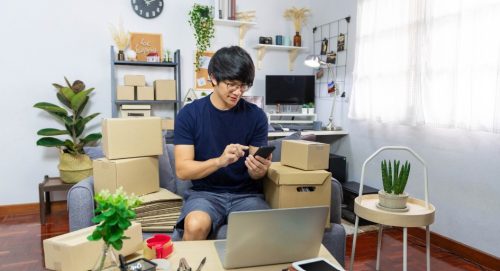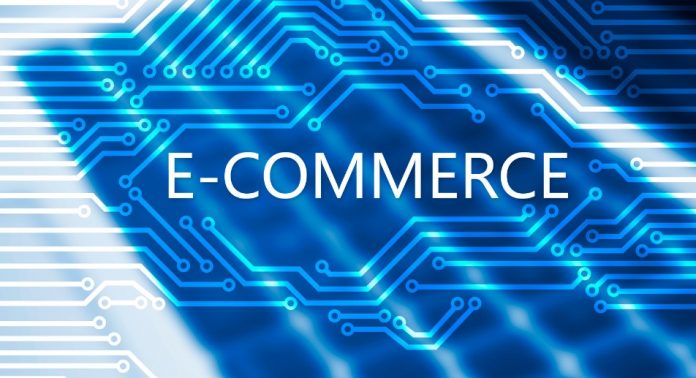A common barrier to growth that retail start-ups and established brands face, is operational. It can make or break profit margins, underpin a seamless customer journey, and getting it right can help your business scale thanks to accelerated, and more accurate order processing.
Enhanced logistical support gives retailers access to discounted shipping rates, lower overheads and with some providers, late order cut-off times, increasing order conversion rates. In this article we will discuss what third-party logistics (3PL) involves, how to find the right fulfilment centre, and the future of eCommerce logistics.
What is eCommerce Order Fulfilment?
E-fulfilment is the process of a retailer or brand appointing a specialist company to orchestrate the goods receipt, storage, picking, packing and shipping of finished goods to consumers, and for some providers, businesses too.

While 3PLs focus on storage and delivery, thanks to enormous growth of online retail and demand for fulfilment centres, they are diversifying to stand out from competitors, offering complementary services such as returns, outsourced customer service, customs clearance support, bespoke packaging, eco-friendly initiatives, and in the case of 4PLs and 5PLs, outsourced manufacturing, procurement and strategic consultancy.
How Does 3PL Work?
- After signing a contract with your chosen fulfilment house, the first step is to integrate your order management system (OMS) and/or sales channels (e.g. Shopify, eBay and Amazon), with the 3PL’s warehouse management system (WMS).
- The next stage involves establishing lines of communication, and instructing your suppliers to ship to the new warehouse location(s), so that your products can be shipped in bulk to the 3PL warehouse.
- On receipt of your products, the picking and packing team will place products, or ‘SKUs’ (stock keeping units), in specific picking locations, usually following an algorithm based on picking methods.
- Once your products are in the warehouse, and integration is complete, this is where the 3PL will perform a test order, to identify if there are any teething issues. Once complete, the fulfilment centre is ready to start processing your orders on your behalf.
- As orders flow in, picking notes, corresponding packing instructions, and a shipping label will be generated. The pick team will collect individual or grouped goods for each order, and take them to the packing bench, ready for packaging and application of the shipping label.
- Packets and parcels are then grouped by carrier, and organised into pallets and/or containers, ready for collection by the 3PL’s courier partners, such as DHL, DPD, FedEx, Yodel, Evri, Royal Mail and Parcelforce.
- At each stage of the order processing journey, the warehousing operatives will use barcode scanners to record each stage of the product’s journey. Once the shipping label is generated, and parcel is collected, a scan occurs and your customer will receive a shipping notification, with a tracking link. Depending on carrier partner selected, your customers will have access to a range of in-flight shipping options, such as timed delivery windows, the option to choose a ‘safe place’, and photos as the shipment travels through the courier network.
To Outsource, or Not to Outsource
Knowing whether to work with a 3PL, or perform warehousing and distribution in-house, depends on a number of factors. What are your average daily orders? Where are your current and future ideal customers based geographically? Do you already have a warehouse? How large is your product range? How perishable are your items? What is your predicted growth over the next one to three years? 3PLs typically demand a minimum of between 10 and 30 daily shipments, and others require over 300.
3PLs also differ in terms of the eCommerce platforms they prefer to work with, and product categories. Thankfully, most are product type, and technology stack-agnostic, and will adapt to suit a retailer’s needs. Adding value at the discovery and implementation stages builds trust, and ensures both parties benefit and can grow with each other.
Managing Expectations
Once you’ve benchmarked your ideal 3PLs based on their capabilities, the next sensible step is to review their pricing. 3PL pricing can be hideously complex, and factors in volumetric storage space, goods in and shipping and returns fees, picking and packaging charges, minimum monthly spend, varying payment terms, monthly software fees, and varying contract terms.
Once pricing is agreed, at this point it makes sense for both client and fulfilment provider to establish KPIs (key performance indicators), and OKRs (objectives and key results), to monitor metrics such as order processing speed, picking accuracy, on-time delivery performance, and customer satisfaction scores (CSAT and NPS).
Financial analysis will also determine whether outsourcing eCommerce logistics has been a successful strategic imperative, based on analysis of operational overheads, cost-to-serve, customer decile analysis in terms of lifetime value (CLTV).
The Future of eCommerce Shipping
The global B2C warehousing and fulfilment market is set to nearly triple in size over the next decade, outgrowing online retail itself, indicating a shift to outsourcing from high-growth start-ups, mid-market merchants and established brands. Furthermore, fulfilment firms are diversifying their offerings both horizontally and vertically, empowering retail leaders to focus on other areas such as marketing and new product development.
Global internet adoption is skyrocketing and consumers in developing nations are building their trust in online commerce. Shoppers in more mature eCommerce markets demand omnichannel, on-brand experiences, rapid and free, yet environmentally-friendly shipping, along with lightning-fast customer support, regardless of sales channel and device preference.
Forward-thinking 3PLs will deliver greater value to merchants by helping them capitalise on these consumer demands, by investing in AI, robotics, and above all else, developing the soft skills within their workforce, to provide empathy and build rapport with consumers that the latest technology, right now, does not offer.



































